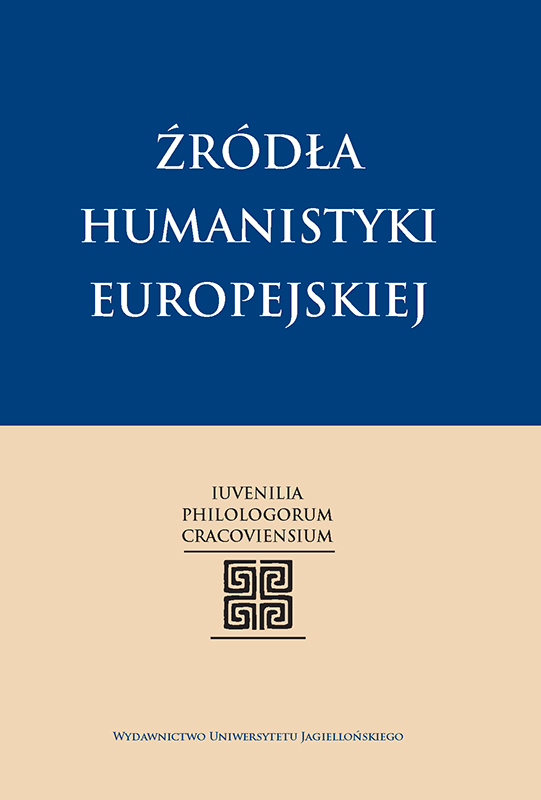S ymbol i sugestia w myśli europejskiej i indyjskiej – spojrzenie komparatystyczno - historyczne
Symbol and Suggestion in European and Indian Thought: Comparative Historical Insight
Author(s): Hubert HładijSubject(s): Semiology, Aesthetics, Recent History (1900 till today), Comparative Studies of Religion, Indian Philosophy, Philosophy of Religion, Psychoanalysis, 6th to 12th Centuries, History of Religion
Published by: Wydawnictwo Uniwersytetu Jagiellońskiego
Keywords: comparison of literary terms; symbol; Sanskrit poetics; suggestion; aesthetic experience;
Summary/Abstract: The article presents a comparison of the two terms – symbol and suggestion – and their functioning in the European and Indian literary traditions. The introduction discusses the adequacy of the comparative approach, and indicates that due to the existing relativity between the two traditions in the meaning of the above terms, the differences shall be referred to more frequently, especially while discussing the poetic practice and the meaning attributed to each of the terms in both cultures. The first part of the paper presents the European perspective on the subject of symbol in philosophy, psychoanalysis, religious studies and semiotics. Further, the literary studies are scrutinized, and the paper discusses the difficulties arising with the attempts to define the symbol and how it differs from other related literary devices, such as: allegory, simile and metaphor. This part concludes with the discussion of the notion of suggestion, which, as a basis for building a new poetical language, accompanied the appearance of the European Symbolism at the turn of the 20th century. It is indicated, however, that although in the Sanskrit literary theory it is possible to use this term to explain or interpret various poetic phenomena in an orderly and systematical manner, such an approach proves impractical to discuss the European poetry. The second part of the article begins with a brief overview of the early Indian thought attempting to define the nature of poetic language. Further, the paper focuses on the theory of suggestion – dhvani as formulated in Dhvanyāloka treaty (“Light of Poetic Suggestion”) by Dhvanikāra (8th century AD) and Ānandavardhana (2nd half of the 9th century). The paper subsequently explores the classification of dhvani types according to the nature of the suggested meaning and the relation of the expressed meaning to the implied one. In one of dhvani types, the symbol – a term absent elsewhere in the Indian thought – is recognized. Nevertheless, the phenomenon it depicts is correctly recognized by Indian theoreticians, which is illustrated with adequate examples. The paper further presents the most appreciated type of suggestion, the one implying aesthetically experience – rasa (literary “taste”), and discusses the means applied to achieve it. Finally, the paper discusses the criteria of appreciating poetry based on the occurrence of the symbol and suggestion as literary devices.
Journal: Źródła humanistyki europejskiej. Iuvenilia Philologorum Cracoviensium
- Issue Year: 2013
- Issue No: 6
- Page Range: 95-110
- Page Count: 16
- Language: Polish

